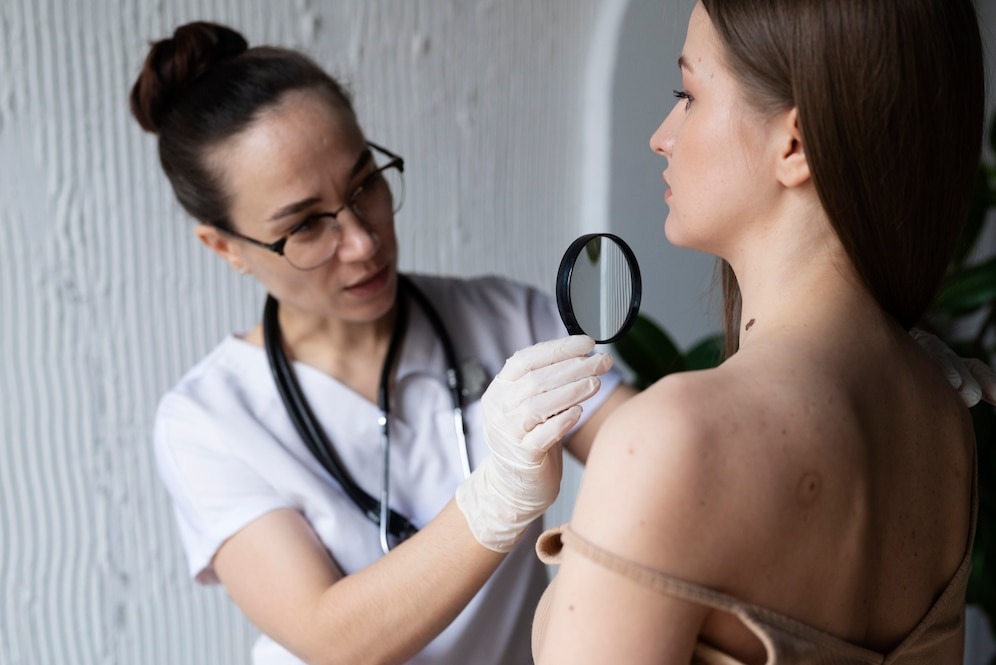When it comes to identifying skin cancer, knowing what to look for can be life-saving. Skin cancer is one of the most common types of cancer, and early detection significantly increases the chances of successful treatment. The following is a detailed article of the different types of skin cancer, their appearances, and some of the latest findings from recent cancer research.
Types of Skin Cancer
Understanding the types of skin cancer is crucial for recognising early signs. Each type has unique characteristics that can help in early identification.
Basal Cell Carcinoma (BCC)
BCC is the most common type of skin cancer. It usually appears as a small, pearly bump or a flesh-coloured lesion that may look like a scar. It’s mostly found on areas of the skin that are exposed to the sun, like the face and neck. BCC rarely spreads to other parts of the body, but early treatment is essential to prevent deeper tissue damage.
Squamous Cell Carcinoma (SCC)
SCC often presents as a red, scaly patch or a sore that may bleed or crust. It’s more aggressive than BCC and can spread if not treated early. SCC is also linked to sun exposure and is often found on the ears, face, and hands.
Melanoma
Melanoma is the deadliest form of skin cancer. It usually appears as a new, unusual growth or a change in an existing mole. Characteristics include asymmetry, irregular borders, multiple colours, and a diameter larger than a pencil eraser. Melanoma can quickly spread to other parts of the body, making early detection and treatment crucial.
Warning Signs to Watch For
It’s important to be aware of changes in your skin. Keep an eye out for any new growths, moles that change in size, shape, or colour, and any sore that doesn’t heal. The “ABCDE” rule is a helpful guide for spotting potential melanomas: Asymmetry, Border irregularity, Color variation, Diameter greater than 6mm, and Evolving over time.
Recent Cancer Research Developments
Recent cancer research has brought promising developments in the fight against skin cancer. Advanced treatments and preventive measures are improving patient outcomes.
New Treatments on the Horizon
One exciting development is the CellFX system, which targets cells that could lead to skin cancer in the future. This non-invasive procedure uses nano pulse stimulation to destroy only the problematic cells while preserving healthy tissue. This could be a game-changer in preventing the progression of benign lesions into cancerous ones
Advances in Immunotherapy
Immunotherapy has revolutionised the treatment of advanced melanoma. Drugs like ipilimumab and nivolumab have significantly improved survival rates by enabling the immune system to better attack cancer cells. These therapies have transformed melanoma from a once-fatal diagnosis to a manageable condition for many patients.
Early Detection and Prevention
Recent studies highlight the importance of early detection and prevention. Smartphone apps and handheld diagnostic tools are being developed to help detect suspicious skin lesions early, making it easier for individuals to seek timely medical advice. Preventive measures such as avoiding excessive sun exposure and using sunscreen can prevent up to 90% of melanoma cases.
Conclusion
Recognising what does skin cancer looks like and staying informed about the latest cancer research can significantly impact early detection and treatment outcomes. While new treatments and technologies offer hope, the best defence is prevention and regular skin checks. If you notice any unusual changes in your skin, consult a healthcare professional promptly. Taking these steps can help protect your health and well-being.




